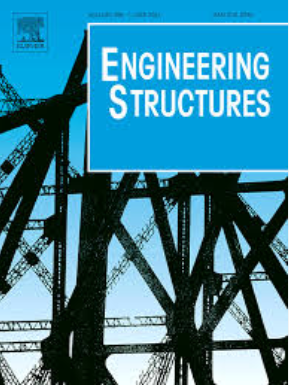新型摇摆互联,用于高级预制预制模块化建筑系统
IF 6.4
1区 工程技术
Q1 ENGINEERING, CIVIL
引用次数: 0
摘要
介绍了一种用于预制、预制多层建筑的创新框架,旨在促进制造和装配阶段的过程自动化。该框架的骨干是一种新型的摇摆钢互连(RSI),它是在现场制造的,可以快速组装和拆卸,而无需在施工现场进行特定的访问。建筑框架与制造、组装和拆卸的设计原则保持一致,通过使用一套标准化的部件套件格式。该设计在模块化框架内为自动化建筑规划提供了灵活的开放空间,避免了对结构核心的要求,从而大大提高了施工速度和效率。本文介绍了主干的概念设计、制造过程的复杂性、组装和拆卸的考虑、关键特征,并随后通过定期计划进行的案例研究来检查其性能。研究结果表明,主干可以使用自支撑单元来支撑建筑物,而无需结构核心。该框架加快了施工时间,减少了材料消耗,并且由于提议的互连,使高刚性的可靠施工成为可能。本文章由计算机程序翻译,如有差异,请以英文原文为准。
Novel rocking interconnection for superior prefabricated prefinished modular building system
An innovative framework is introduced for the construction of prefabricated, prefinished multistorey buildings, which is designed to facilitate process automation during both fabrication and assembly phases. The backbone of this framework is a novel rocking steel interconnection (RSI) that is manufactured offsite and enables quick assembly and disassembly without requiring specific access at the construction site. The construction framework aligns with the principles of design for manufacturing, assembly, and disassembly through the utilisation of a set of standardised components in a kit of parts format. The design provides flexible open spaces for automated architectural planning within a modular framework and obviate the requirement for a structural core, thereby significantly enhancing construction speed and efficiency. The paper presents the conceptual design of the backbone, the intricacies of the fabrication process, assembly and disassembly considerations, key features, and subsequently examines its performance through a case study conducted with a regular plan. Findings from the study indicate that the backbone can support buildings using self-supporting units without necessitating a structural core. This framework accelerates construction timelines, reduces material consumption, and enables reliable construction with high rigidity due to the proposed interconnection.
求助全文
通过发布文献求助,成功后即可免费获取论文全文。
去求助
来源期刊

Engineering Structures
工程技术-工程:土木
CiteScore
10.20
自引率
14.50%
发文量
1385
审稿时长
67 days
期刊介绍:
Engineering Structures provides a forum for a broad blend of scientific and technical papers to reflect the evolving needs of the structural engineering and structural mechanics communities. Particularly welcome are contributions dealing with applications of structural engineering and mechanics principles in all areas of technology. The journal aspires to a broad and integrated coverage of the effects of dynamic loadings and of the modelling techniques whereby the structural response to these loadings may be computed.
The scope of Engineering Structures encompasses, but is not restricted to, the following areas: infrastructure engineering; earthquake engineering; structure-fluid-soil interaction; wind engineering; fire engineering; blast engineering; structural reliability/stability; life assessment/integrity; structural health monitoring; multi-hazard engineering; structural dynamics; optimization; expert systems; experimental modelling; performance-based design; multiscale analysis; value engineering.
Topics of interest include: tall buildings; innovative structures; environmentally responsive structures; bridges; stadiums; commercial and public buildings; transmission towers; television and telecommunication masts; foldable structures; cooling towers; plates and shells; suspension structures; protective structures; smart structures; nuclear reactors; dams; pressure vessels; pipelines; tunnels.
Engineering Structures also publishes review articles, short communications and discussions, book reviews, and a diary on international events related to any aspect of structural engineering.
 求助内容:
求助内容: 应助结果提醒方式:
应助结果提醒方式:


